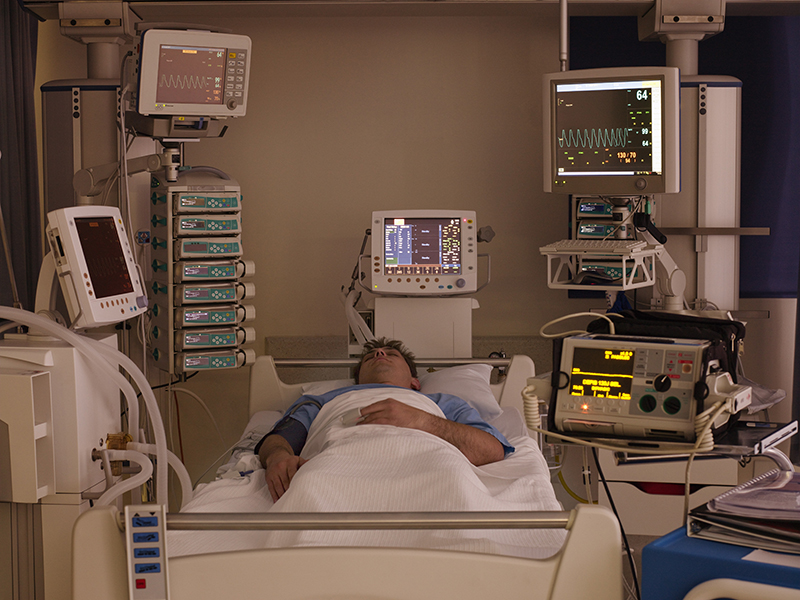
Town Hall Meetings Stir Up the United States
Across the country, citizens are voicing their objections to President Donald Trump’s agenda using a method as old as our nation itself: by participating in town hall meetings. These meetings take place in churches, theaters, high school auditoriums, and many other venues, and give people a chance to meet with their Congressional representatives and share their thoughts and concerns on various issues.
While town hall meetings are not a new phenomenon in our democracy, what is unique is the sheer number of people attending these events over the past two weeks. In nearly every state, town hall meetings are attracting hundreds and sometimes thousands of citizens, many of them angry, some carrying signs and chanting protest slogans. Many events are standing room only, even turning people away when the number of people participating exceeds the capacity of the meeting space. Health care reform, the Muslim immigration ban, and Russian interference in the election are some of the issues that have come up again and again in meetings around the U.S. this month.
The Republican representatives who are the target of these meetings have responded in a variety of ways. Some, such as Leonard Lance of New Jersey and Tom Cotton of Arkansas, did their best to field their constituents’ questions and comments, despite boos and jeers from the crowd. Some, such as Pat Tiberi of Ohio, chose not to attend their town hall meetings at all, leaving constituents to address their concerns to cardboard cutouts, an empty chair, or even an empty suit meant to symbolize the missing representative. And still others, such as Jason Chaffetz of Utah, have stood by President Trump’s claim that protestors and town hall attendees are paid – a claim that many town hall participants have refuted by holding up signs stating their zip codes and sending fake invoices to their representatives. In general, the members of Congress who face up to their constituents are receiving more support than those who choose not to: a reminder that, whether they like it or not, the key job of a representative is to listen to, and represent, the will of the citizens.
What Do You Think? During the past two weeks, was a town hall event held near you? Did you choose to attend? Why or why not? If you didn’t, use Internet resources to learn whether or not your representative attended the town hall, and the kinds of issues that were addressed. Write a short paragraph describing your findings.
Are Hospitals Hurting Us?
Hospitals are among the most expensive structures to build. However, many of them have design flaws that are not only inconvenient, but can actually harm a patient’s chances of recovery.

Infection: One of the greatest problems facing today’s hospitals is infection, which can lead to illness or even death. In fact, up to 30 percent of the nation’s intensive care unit patients are affected by an infection they received while at the hospital. This serious issue can be addressed by providing private rooms, rather than shared ones; installing easier-to-clean surfaces; and improving the quality of air filters. Though some may argue that the costs associated with putting every patient in a private room may be too high, the price tag is more than offset by the amount of money hospitals would save every year by eliminating hospital-acquired infections.
Falls and Injuries: Poor lighting, unfamiliar surroundings, slippery floors, and medication can cause patients to become disoriented and can lead to falls and injuries. These problems are easy to address with better lighting and non-slip surfaces. Also, in the event that a patient does fall, nurses need to be able to reach that patient quickly, which can’t always happen if a nurse has to travel down a long hallway from the nursing station to the patient’s room. Instead, nursing stations should be decentralized, closer to patient rooms, and allow a direct line of sight to the patients’ beds so that nurses will know immediately if a fall occurs.
Noise: We all know that receiving adequate sleep is essential to the healing process. However, the noise level in hospitals is much higher than it should be, making it hard for patients to sleep. Installing sound-absorbing panels on walls and ceilings, limiting alarms, and using noiseless paging technology are all ways that hospital staff can reduce unnecessary noise and ensure that patients are able to get a good night’s sleep.
Access to Nature: Patients with access to natural lighting or views of nature experience less stress, greater relaxation, and faster recovery times. If a window with a real nature view isn’t available, studies have shown that even hanging a photo of a landscape on the wall, or allowing the patient to watch a nature video, will shorten the patient’s hospital stay and hasten his or her recovery.
What Do You Think? Have you ever been a patient in a hospital? Based on your experience, what design improvements would you recommend the hospital make to help patients heal more quickly and effectively?
Iraqi Forces Push Back Against ISIS
The Iraqi city of Mosul has been a particularly bloody battleground in that nation’s fight against the Islamic State, also known as ISIS or ISIL. The Islamic State first took control of Mosul in 2014. Since then, Iraqi forces, assisted by American and allied air support, have struggled to take back the city piece by piece. The battle for the eastern half of the city, though an Iraqi victory, lasted 100 days and resulted in the deaths of 500 Iraqi military personnel and the wounding of 3,000 more.
However, last Thursday, Iraqi forces made a major military gain when they were able to take control of Mosul’s airport, an important strategic location. Though ISIS has largely destroyed the airport – cutting wide trenches in the runways and piling debris to prevent Iraq and its allies from using it to move troops and supplies – taking the airport is still a tactical victory. From here, Iraqi forces will move toward reclaiming the older, western half of Mosul, which is expected to be very difficult. It is estimated that there are currently 4,000 to 6,000 Islamic State fighters in Mosul.
Meanwhile, the U.S. government is looking at plans to widen its fight against ISIS beyond aiding forces in Iraq and Syria. The U.S. military estimates that there are currently more than 45,000 ISIS fighters from more than 100 nations around the world. An essential aim of the government’s new plan will be cutting off communication between these groups. While details of the new plan have not yet been released, it’s possible that it will involve raising the number of U.S. troops deployed overseas. President Trump has repeatedly stated that he wishes to be as aggressive as possible in fighting the Islamic State.
What Do You Think? Should the United States deploy more troops to aid in the international fight against ISIS? Why or why not?
Bon Voyage Bao Bao
The National Zoo is Washington, D.C., is well known for its giant panda exhibit. However, last week, one of those giant pandas – three-year-old Bao Bao – was returned to China. Though she was born here in the United States, her parents were originally from China and came to the U.S. as part of a cooperative breeding program that requires offspring to be returned to China before their fourth birthday.
Bao Bao, whose name means “precious” or “treasure, is the eleventh giant panda to be born overseas and returned to China through this program. The National Zoo planned six days of celebration to bid farewell to 205-pound Bao Bao, who was then taken by Fed Ex truck and plane to her new home in Chengdu, China.
In China, Bao Bao will be put in quarantine for a month while zookeepers verify her health. Eventually, she will be moved to her new 1,100 square foot enclosure, which has both indoor and outdoor play areas and is equipped with play structures and food. Because she doesn’t understand Chinese commands, she will initially have an English-speaking keeper. In two or three years, when she reaches full maturity, she will become part of a program to breed giant pandas.
Such breeding programs have been successful at helping to preserve giant pandas, long considered to be one of the world’s most endangered animals. Currently, more than 200 giant pandas live in captivity.
